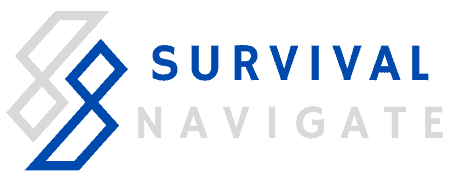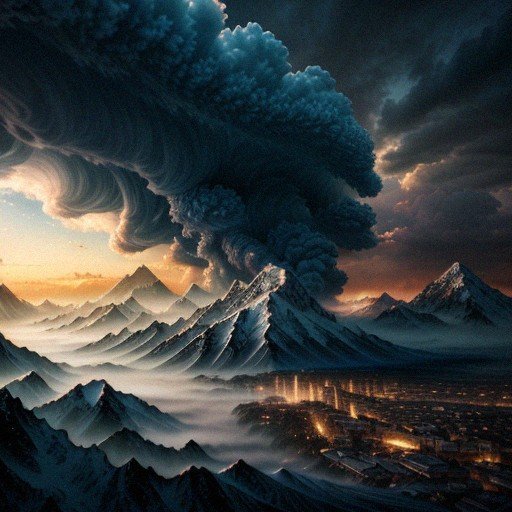The Science Of Preparedness – Understanding Natural Disaster Patterns And Forecasts
Hey there, folks! Have you ever wondered why some areas are more prone to natural disasters than others? Or how scientists are able to predict when and where these devastating events will occur?
Well, today we’re diving into the fascinating world of preparedness and understanding natural disaster patterns and forecasts. With the power of science, you’ll learn how to stay one step ahead of Mother Nature and keep yourself and your loved ones safe.
So buckle up and get ready to unlock the secrets of disaster prediction – because knowledge truly is power!
Key Takeaways
Key Takeaway 1: Stay informed about natural disaster patterns and forecasts to protect yourself and your loved ones. Pay attention to weather reports and updates from local authorities to know when to take necessary precautions.
Key Takeaway 2: Understand your surroundings and assess the risks specific to your area. Know if you live in a flood-prone zone, earthquake-prone region, or tornado alley, and have an emergency plan in place accordingly.
Key Takeaway 3: Prepare an emergency kit with essential supplies like water, non-perishable food, first aid supplies, and flashlights. Make sure to have a plan for your pets as well, including food, water, and a safe place for them during a disaster.
Key Takeaway 4: Have a communication plan in place with your family and friends. Identify a meeting spot in case of evacuation and establish methods of reaching each other, such as phone calls, text messages, or social media platforms, to ensure everyone’s safety during a natural disaster.
Choose preparedness solutions based on natural disaster patterns
Choosing the right preparedness solutions is crucial when it comes to combating natural disasters. By understanding natural disaster patterns and forecasts, we can better equip ourselves to face these challenges head-on. Whether it’s earthquakes, hurricanes, or wildfires, being prepared is key to staying safe and protecting our communities.
One way to approach preparedness is by analyzing historical data on natural disasters in your area. Look for patterns and trends to anticipate the types of disasters that are most likely to occur. For example, if you live in an area prone to wildfires, investing in fire-resistant landscaping and having a well-thought-out evacuation plan can make all the difference. Similarly, if your region is at risk for hurricanes, ensure you have a robust emergency kit and know the evacuation routes.
In addition to historical data, staying up-to-date with the latest forecasts is essential for optimal preparedness. Advances in technology and the science of meteorology have made it easier than ever to receive accurate and timely weather predictions. Keep an eye on your local news and weather stations, as they often provide valuable information on upcoming storms or potential natural disasters.
Having this knowledge in advance allows you to take necessary precautions and make informed decisions regarding your safety and well-being. Remember, being prepared not only ensures your own survival but also enables you to help others in need.
Educate yourself on the science of preparedness
Educating yourself on the science of preparedness is empowering and crucial in today’s ever-changing world. By understanding natural disaster patterns and forecasts, you can take proactive steps to protect yourself, your loved ones, and your community. Having the knowledge to anticipate potential hazards gives you a head start in devising effective emergency plans and minimizing the impact of disasters.
Science has provided us with valuable tools and techniques to predict and track natural disasters. By staying informed and learning about the latest research on these phenomena, you can make more informed decisions in preparing for emergencies. The science of preparedness enables us to understand the likelihood and intensity of natural hazards such as hurricanes, wildfires, or earthquakes. Armed with this knowledge, you can take preventative measures such as securing your home, creating evacuation plans, and stocking up on essential supplies.
Moreover, being knowledgeable about the science of preparedness fosters resilience and community cohesion. When individuals can share their understanding and experience, it creates a support network that can withstand the challenges of a natural disaster.
By educating ourselves about natural disaster patterns and forecasts, we can foster a culture of preparedness, where everyone understands the importance of being well-informed, prepared, and ready to assist others in times of need. Together, we can build a safer and more resilient future for ourselves and our communities.
Understand forecasts to anticipate potential disasters
Understanding forecasts is crucial when it comes to preparing for potential natural disasters. By analyzing weather patterns and historical data, scientists can make predictions about the likelihood and severity of upcoming events. These forecasts allow individuals, communities, and governments to take necessary precautions and minimize the impact of disasters.
By staying informed and aware of forecasts, you can anticipate potential disasters and take proactive steps to protect yourself and your loved ones. Whether it’s a hurricane, a wildfire, or an earthquake, understanding the forecast gives you time to gather essential supplies, secure your home, and develop evacuation plans. It also allows you to stay updated with any changes in the forecast, providing you with the opportunity to adjust your preparations accordingly.
It’s important to remember that forecasts are not infallible, as natural disasters can be unpredictable and complex. However, by understanding the science behind these forecasts, we can increase our preparedness and adaptability. By following updates from reliable sources and staying vigilant, we can ensure our safety and well-being in the face of potential disasters. So let’s embrace the power of knowledge and make preparedness a priority in our lives.
Understand natural disaster patterns and forecasts
Understanding natural disaster patterns and forecasts is a crucial part of being prepared for potential emergencies. By studying the science behind these phenomena, we can gain valuable insights into their causes and predict when and where they are likely to occur. With this knowledge, we can take proactive measures to protect ourselves, our families, and our communities.
One key benefit of understanding natural disaster patterns is that it allows us to prioritize our preparedness efforts. By studying historical data, scientists can identify areas that are more prone to specific types of disasters such as hurricanes, earthquakes, or floods. Armed with this information, we can focus on implementing measures such as reinforcing buildings, constructing flood barriers, or developing evacuation plans that are tailored to our specific needs.
Additionally, understanding natural disaster forecasts can help us stay informed and react in a timely manner. Weather agencies and experts make use of advanced forecasting models to predict the path, intensity, and timing of various disasters. By regularly checking these forecasts and staying updated on the latest developments, we can ensure that we are aware of potential risks and can take appropriate action when necessary. This knowledge empowers us to make informed decisions and stay one step ahead, increasing our chances of staying safe and minimizing the impact of a disaster.
A solid understanding of natural disaster patterns and forecasts contributes significantly to preparedness. By utilizing this knowledge, we can prioritize our efforts, tailor our preparations, and stay informed about potential risks. With these proactive measures in place, we can face natural disasters with confidence and work towards building resilient communities that can quickly recover from these events. So let’s embrace the science behind natural disasters and equip ourselves with the tools and knowledge needed to be prepared.
Final Words
Knowledge is our strongest defence in the face of the unknown. As we gain greater insight into natural disaster patterns and forecasts, we are on the cusp of a profound change. Armed with this scientific knowledge, we gain the power to decipher the subtlest shifts in our environment and embrace the certainty that comes from preparation.
We can no longer afford to ignore the signs written in nature’s language, for they hold the key to our survival. Let us embark on this journey of enlightenment, for in our pursuit, we shall unlock the secrets of our world and unlock the potential within ourselves. Remember, knowledge is not mere power, but the beacon that guides us through the darkest storm.







